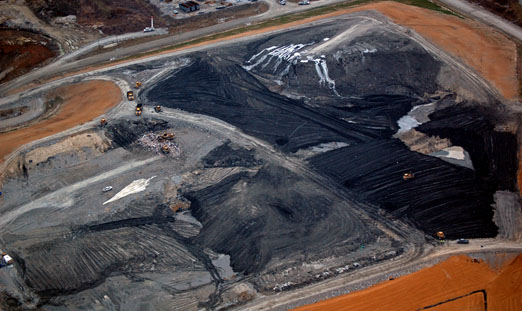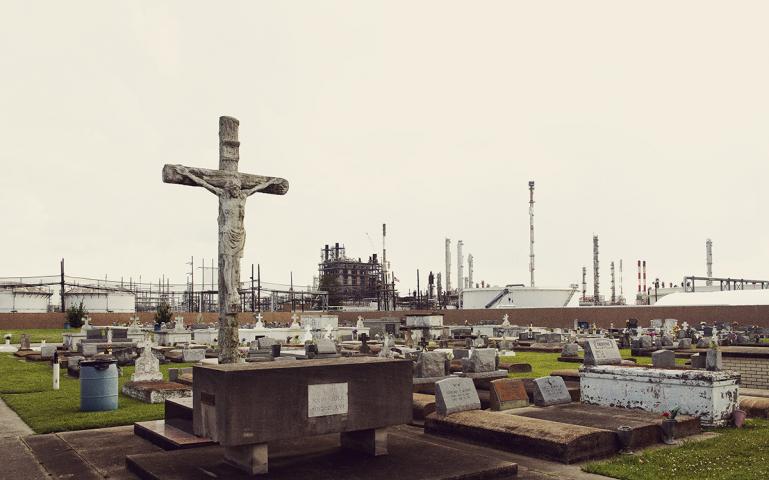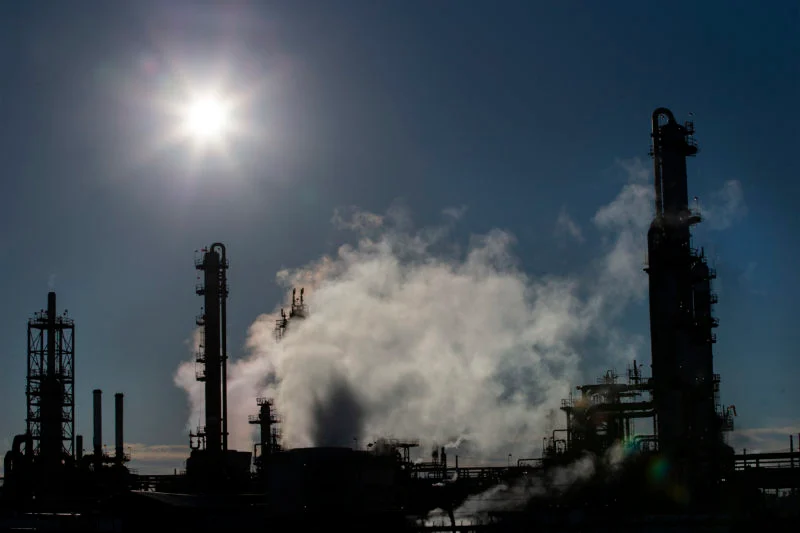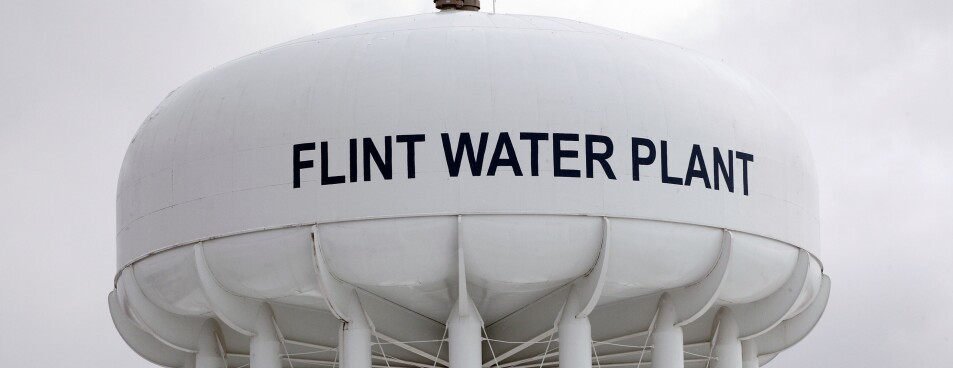Guest Column –
By Jonathan Sharp –
Environmental racism is a kind of racial inequality prevalent in the United States of America and around the world.
Environmentally toxic plants, dumping grounds and similar sites are often located in low-income areas populated by people of color. Exposure to materials in and around these sites often lead to cancer, respiratory diseases and other health problems.
Flint’s water crisis, arsenic poisoning in the San Joaquin Valley, Louisiana’s “Cancer Valley” and TVA’s handling of coal ash in Tennessee and Alabama are all contemporary examples of environmental racism’s negative consequences in the United States.
An overview of chemical toxic exposure history
Taking a step back and looking at the history that the U.S has with toxic exposure we might find a grim map dating as far back to 1900 with the rise of asbestos in the U.S. Between the 1900s and the 1980s, many industrial workers and communities living close to mining fields have been exposed to large amounts of asbestos be it through directly working with raw asbestos, asbestos products, or through secondary exposure.
Later on, numerous communities living close to military bases or industrial facilities have been exposed to PFAS, a category of poisonous fluorinated compounds derived from aqueous film-forming foam (AFFF) and non-stick products. These chemicals are very dangerous since it they are extremely resilient in the environment. America’s hundreds of locations, including military bases where thousands of servicemen and their families live and work, have been poisoned for years with PFAS.
But despite those being glaring examples of toxic exposure, they only touch the surface of the issue.
Cancer Alley
Looking further into toxic exposure and most specifically the issue of environmental racism, there are a plethora of cases that perfectly illustrate this point, such as what has come to be known as ”Cancer Alley” – an 85-mile strip of territory between New Orleans and Baton Rouge along the Mississippi River that is surrounded with oil refineries and petrochemical factories. The neighborhood was given the macabre nickname because its occupants are 50 times more likely to develop cancer than the typical American – and its residents are overwhelmingly Black.
Cancer Alley has been dubbed the “frontline of environmental racism” as a result of this. The situation has deteriorated to the point where it has started to be referred to it as a new form of slavery.
Florida Sugar Cane
Another example is Florida’s sugar cane producers who are legally allowed to set their fields on fire before harvest in order to burn everything — save the cane — resulting in significant pollution in mostly black, impoverished areas. To this day, residents of the Glades in Pahokee, Florida, face a frightening reality. In 2015, a U.S. Education Department-funded research discovered that inhabitants of the Glades who are exposed to pollution from sugar field burning report increased respiratory discomfort, and people have complained of weakened immune systems and an increase in asthma.
Coal Ash

The toxic TVA coal ash mountain grows higher every day at the Arrowhead Landfill in Alabama’s Black Belt as millions of tons make their way down in train after train from one of the worst environmental disasters in U.S. history at Kingston, Tennessee: Glynn Wilson
Over a billion tons of poisonous coal ash flowed into the Emory River Channel near Kingston, Tennessee, in 2008. Workers who cleaned up the debris developed brain cancer, lung cancer and leukemia as a result of the disaster. The Tennessee Valley Authority then carried 4 million cubic yards of coal ash from the leak into Uniontown, Alabama, a largely black neighborhood with a low-income population. The EPA determined that the coal ash in Uniontown was not hazardous under the Comprehensive Environmental Response, Compensation, and Liability Act (CERCLA), and so provided the community with no protection against the very toxic chemical.
Flint Michigan
Many people consider Flint, Michigan’s water shortage to be an “egregious demonstration of environmental injustice.”
The disaster began when the city failed to adequately clean its municipal water system following a switch in water sources, resulting in mass lead poisoning of hundreds of children and adults between April 2014 and December 2015. Despite a significant volume of complaints and reports of illness from area residents (the majority of whom were low-income persons of color) city management failed to respond appropriately and treated the situation with disdain.
Each year, the area’s 21 Harmful Emit Inventory (TRI) plants release up to 484,000 pounds of toxic chemicals. The situation has deteriorated to the point where even the local elementary school has been forced to close and relocate due to excessive concentrations of lead discovered in youngsters.
North Carolina
After dumping fluids polluted with PCBs along 240 miles of road in 1978, affecting primarily poor, Black neighborhoods, the state of North Carolina picked Warren County to host the hazardous waste facility and assist in its cleanup. However, when neighbors learned this would have a negative impact on their health and drinking water, they organized demonstrations and filed lawsuits to prevent the landfill from being built there. They eventually lost the court battle, and the hazardous waste site was relocated to the new location.
Although harmful exposures to vulnerable groups come in a variety of forms, heavy metals, which are naturally occurring elements, are among the most problematic. They have become widely employed and disseminated in the environment because of their diverse applications in industry, agriculture, medical, domestic usage and technology. Concerns regarding their impact on human health and the environment are mounting. Heavy metals can be hazardous in a number of ways, depending on the amount, route of exposure, chemical species, as well as the individual’s or group’s age, gender, heredity and nutritional state.
For a lengthy period of time, the climate crisis exposed vulnerable groups to heavy metals such as lead, mercury, arsenic and cadmium, which have been shown to have devastating impacts even at low levels of exposure. They are also listed as human carcinogens by the U.S. Environmental Protection Agency and the International Agency for Research on Cancer.
How it’s impacting vulnerable communities
Environmental racism describes how minority group neighborhoods, which are disproportionately populated by people of color and people from low socioeconomic backgrounds, are burdened with a disproportionate number of hazards, such as toxic waste facilities, garbage dumps and other sources of pollution and foul odors that degrade the quality of life. This can result in a variety of diseases and cancers. As a result, as the fight against climate change worsens, minority communities will be disproportionately impacted.
When government officials or other individuals or groups in power are faced with the decision of where to locate the newest hazardous waste facility or dump site, they typically do not want it to be in their backyard, and instead, choose to locate these hazardous waste facilities and dumpsites in areas farthest away from them where land is the cheapest. This often results in these sites being placed in or near communities populated by people who do not fall within the same tax bracket.
Not only are people of color disproportionately harmed by hazardous wastes and pollution, but they may also anticipate divergent reactions from the government when it comes to resiliency building following an environmental disaster or cleanup. This was seen during and immediately following Hurricanes Katrina and Sandy, as well as in the hazardous waste remediation operations in Dickson County, Tennessee.
Individuals of race and communities of color face a slow response to their issues. It appears that neither existing environmental, health, and civil rights laws, nor local land use controls, have been applied or adapted adequately to reduce health risks or mitigate various adverse effects on families who live in or near toxic “hot spots,” which disproportionately house people of color.
Despite abundant evidence and rising knowledge of the dangers toxic dumping poses to everyone’s health, our society’s attitude toward hazardous product manufacture and disposal is one of “out of sight, out of mind.” An increasing amount of evidence indicates that maternal exposure to environmental toxicants may endanger not just the mother’s health, but also the health and development of the fetus. These same individuals frequently receive inferior health treatment. Communities of color are considerably more in danger without sufficient health care.
An EPA research paper published in 2018 concluded that non-white Americans are disproportionately afflicted by air pollution made up of automotive fumes, smog, soot, oil smoke, ash, and construction dust than white people at the national, state, and county levels. The International Agency for Research on Cancer has classified this sort of pollution as a certain carcinogen, and the EPA has identified it as a contributor to poor health problems such as lung disease, heart attacks and early mortality.
Asthma and lead poisoning are among many disorders connected with harmful substances or poisons in the environment, according to the Mount Sinai Journal of Medicine. Children are more sensitive to environmental toxins than adults for a variety of reasons, including their immature metabolic system, which takes longer to process and excrete hazardous substances than adults, and their fast growth and development, which makes them more prone to toxins.
On the other hand, exposure to harmful environmental circumstances can result in a range of disorders in adults, including:
• Diabetes
• Cancer of the lungs and upper respiratory system
• Lung diseases
• Circulatory disease
• Dermatitis
• Concerns about fertility
• Immune system dysfunction
• Cancer of the pancreas
While this list is extensive, it is not complete, since many additional ailments can be caused in part or wholly by environmental toxins and dangers. However, the mechanism by which particular chemicals and pollutants worsen or create various health disorders is yet unknown.
What should be done in order to prevent toxic exposure on vulnerable communities
For decades, industrial settings have poisoned rivers and polluted the air. As a result, vulnerable communities living close by have statistically elevated rates of cancer, developmental and birth defects, cardiovascular, lung, and endocrine diseases, as well as a slew of other toxic-related health problems. While several communities have been harmed, steps must be taken to limit or eliminate hazardous community exposure in locations where it has been out of hand.
Changes in policy, such as stricter regulation, more consistent enforcement, and larger fines, are all necessary components of the solution. When the most cost-effective course of action is for a firm to pay penalties while continuing to be reckless or sloppy in its environmental compliance, the policy has failed.
While everyone is aware of climate change and the impact of pollution on the global environment, modifying the climate for individuals who live in close proximity to the source of pollution is at the heart of both environmental and racial injustice. By focusing on the pervasive impacts of environmental racism, we may begin to change the systemic racism imbalance.
With its goal to ensure environmental justice and equal economic opportunity, the Biden Administration is working to remedy past wrongs and create a more just future for all communities.
This strategy, among other things, pledges to:
• Establish an environmental and climate justice section inside the US Department of Justice.
• Raising the profile of environmental justice inside the federal government and modernizing the approach at all levels of government
• Restructure the External Civil Rights Compliance Office of the Environmental Protection Agency
• Increase monitoring in villages on the frontline and along the fence line
• Require community notification
• Establish interagency task teams to address specific issues and communicate directly with communities
• Adopt a scientific approach when dealing with water pollution
• Prioritize programs and technologies that assist disadvantaged areas in reducing traditional air pollution.
Environmental racism must be tackled on a national and global basis in order to best pursue equal treatment for everyone in the application and institution of health and environmental laws and regulations.
In the United States, hazardous material and waste extraction, manufacturing, storage, treatment, and disposal activities are frequently situated in close proximity to areas populated by people of color. Yet African Americans, Hispanic-Latino North Americans, Asian Americans, Native Americans, and non-citizens in the United States are typically the least able—politically and economically—to influence the governmental institutions that make these decisions. Additionally, people of color bear a disproportionate share of the burden of the present economy’s lack of public health safeguards.
About the Author
Jonathan Sharp is the CFO of Environmental Litigation Group, P.C., a law firm in Birmingham, Alabama, that has represented numerous communities struggling with illnesses caused by environmental toxic exposure.

















Thanks for the elevation of this important issue! In Maryland, we are promoting the passage by the state legislature of the Environmental Human Rights Amendment which will guarantee the right to a healthful environment to every person, and make the government the sentinel of this health. This will help prevent sacrifice zones and provide a means of redress for inequities, pollution, and over-development. Several other states are considering such legislation, which just passed in New York, and already exists in several others.